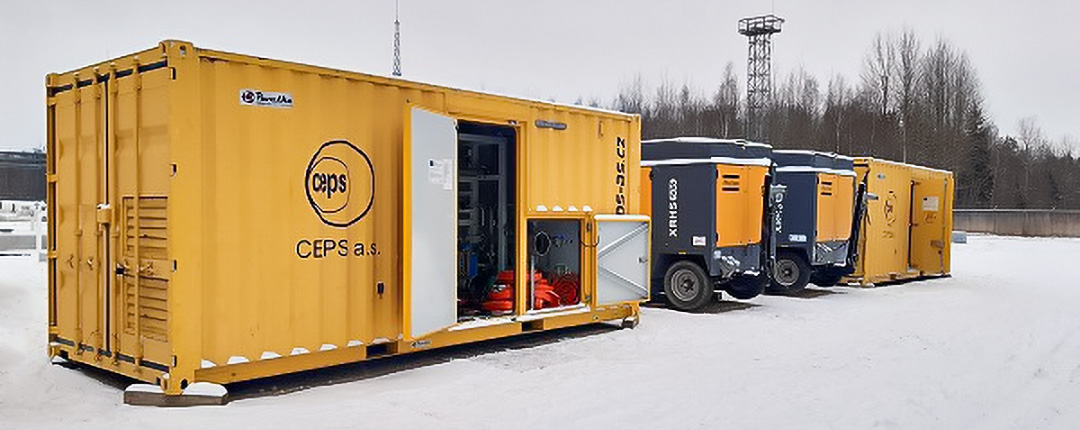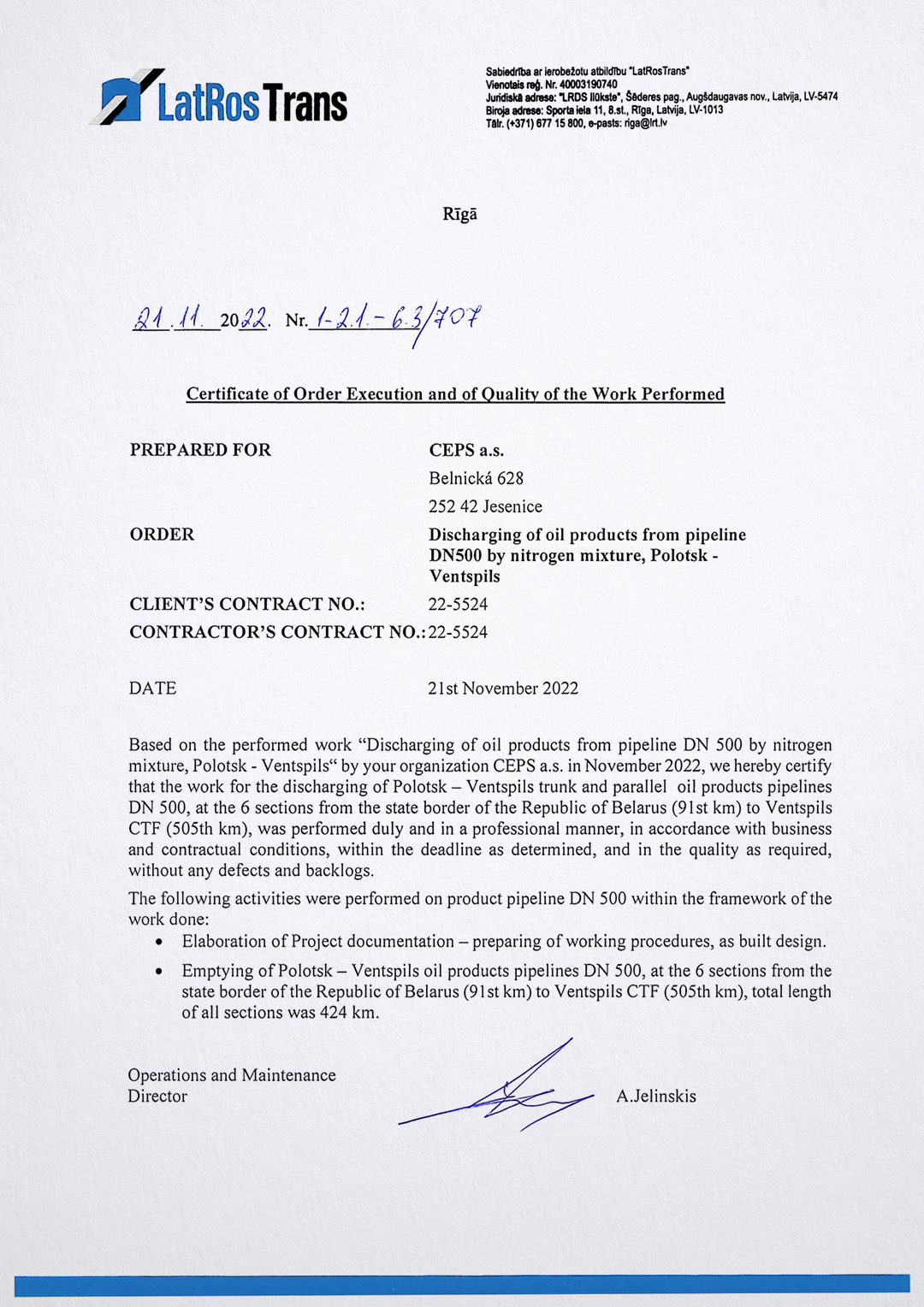CEPS again in the Baltics
The changes that are now taking place in the oil, oil products and gas market require quick and professional solutions. For LatRosTrans, we have just emptied 424 km of DN 500 pipeline using nitrogen.

Mobile membrane units for the production of nitrogen
In response to the invasion of Ukraine by the Russian army, the Council of the European Union adopted a sixth set of sanctions in June 2022, including a ban on the purchase, import or transfer of crude oil and certain petroleum products from Russia to European Union member states.
In connection with the sanctions imposed, the transportation of diesel fuel via the DN 500 Polock – Ventspils pipeline to the territories of Latvia, Lithuania and Belarus has been stopped. This created a situation in which the 596 km long DN 500 Polock – Ventspils pipeline remained filled with standing diesel fuel in its entire volume (approximately 123,600 m³).
The owner and operator of the DN 500 pipeline on the territory of Latvia is LatRosTrans, which in September 2022 (based on similar actions successfully implemented in 2010 and 2016 – Emptying and decontamination of 750 km of DN 700 pipelines) contacted again the Czech company CEPS (specializing, among others, in the displacement of oil products from pipeline systems) with the intention to displace the standing product from the DN 500 Polock – Ventspils section of the pipeline, from the Latvian-Belarusian border to the oil terminal in the location of the port city of Ventspils on the Baltic Sea coast.

Work under the contract
CEPS, as the general contractor for the contracted works, performed the oil product displacement using nitrogen.
The DN 500 pipeline route, with a total length of 424 kilometres and an approximate volume of 87,830 m³, had to be divided into six separate sections of varying lengths, the longest of which were 228 and 130 kilometres long.
The total distance between nitrogen units and the tanks located in the port of Ventspils was an impressive 358 kilometres when displaced.
After the pipeline was divided, the sections without stationary traps were temporarily fitted with special CEPS traps allowing the insertion and removal of the pigs. The excavation, installation and welding work, as well as the shutdown of the pipeline using TDW Stopple technology, was carried out by LatRosTrans.
Diesel fuel was removed of the individual sections by means of pigs that were propelled through the pipeline by on-site produced nitrogen. The production of nitrogen was provided by CEPS mobile nitrogen units.
It was necessary to produce 646,875 m³ of nitrogen to empty all six sections.
The displaced diesel fuel was stored in a 50,000 m³ tank at the Ventspils terminal and pumped to the tankers.
After the product was removed from all six sections, nitrogen was left in the pipeline at a minimum pressure of three bar. This will permanently ensure a non-explosive environment in the pipeline, minimize the development of corrosion on the internal surface of the pipeline and allow monitoring of the pipeline leak tightness.
Summary
From the initial contact to CEPS by the pipeline operator in early September 2022, to the subsequent development of the implementation project, to the execution and completion of all work, only 2.5 months have passed. The diesel fuel itself was displaced from the Belarusian border through the territory of Latvia and Lithuania to the oil terminal at Ventspils on the shores of the Baltic Sea in less than a month.
The technology used, which CEPS has developed and continues to improve, enables fast, reliable and above all safe displacement of flammable liquids from pipeline systems.

View the certificateCertificate of order execution and of quality of the work performed
More in the article CEPS again in the Baltics (PDF, Czech language, 294 kB).
